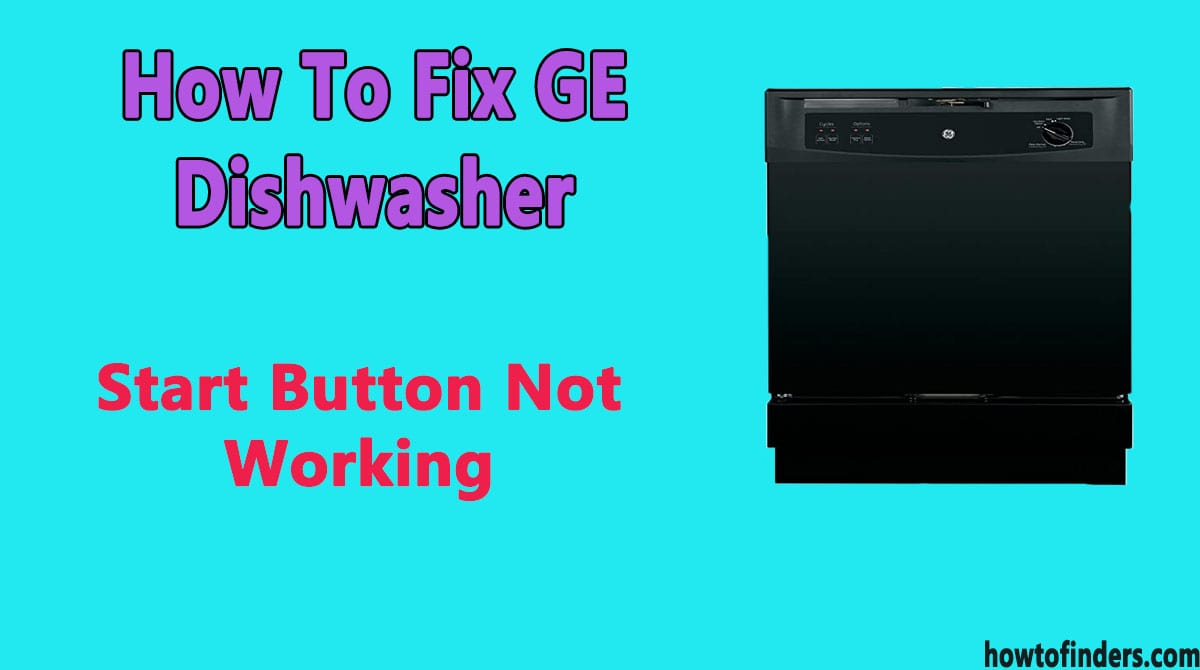Are you having trouble getting your GE dishwasher to start? Are you working on your second load and wondering why the dishwasher won’t run again?
There are few things worse than the feeling of being stuck in the kitchen when the dishwasher’s not working! Luckily, these troubleshooting tips can help you get back to washing dishes so you can start enjoying life again!
I was also able to solve the problem when I went through these steps but I was deeply worried when this problem occurred.
I spent a ton of money on this product and when it stopped working, it was a period of disguise for me.
Table of Contents
ToggleChecking the Power Supply
Locate your dishwasher’s electrical cord and unplug it from its power source. Locate any circuit breakers in your home.
After that flip them to the off position, and check for signs of burning on or around any appliance that is connected to a breaker.
If you notice these issues, call an electrician immediately. Next, flip on your dishwasher and make sure that it runs through its cycles with no problems. If there are no issues here then move on to another issue.
Reading Your Error Codes
If your dishwasher won’t start, you need to check to see if it has a display panel. If so, turn it on and press any buttons that are lit up. This should give you an error code.
A quick Google search will tell you what that error code means. For example, if your dishwasher beeps seven times when turned on and no buttons are lit up (indicating an F-01 or E-04 code), then look up both of those codes online to see what they mean.

In most cases, they both relate to water temperature or power issues—and these can usually be fixed by either turning off your dishwasher for 10 minutes or manually selecting a hotter wash cycle.
Resetting The Control Board
The first thing to do if your dishwasher’s start button isn’t working is to check and make sure it’s not locked.
Sometimes, when we think we’ve started a dishwasher, but then walk away and don’t hear any noise, we tend to assume that it’s not running.
Oftentimes, though, it has just quietly kicked off after a few minutes of running in order to save water and energy.
To start your dishwasher again, look on top of or behind your control panel for an unlatched switch that you can flip back into place.
When in doubt, feel free to check with whoever installed your appliance; they’ll be happy to confirm whether or not it needs resetting.
Checking the Timer
One of the most common problems with a faulty start button occurs when there’s an issue with your dishwasher’s timer.
This component is responsible for turning on your unit, so if it’s not working correctly, your appliance won’t power up.
Resetting your timer is easy: First, turn off and unplug your dishwasher. Then press and hold in both buttons until you hear a beep—typically about 20 seconds or so—then release them. Now reconnect and plug in your machine.
Testing the Cycle Start Relay
Fixing a GE dishwasher with a dead start button begins with diagnosing and then fixing one of two problems. One, it’s possible that you have a bad start relay on your machine.
To test if that’s causing your problem, you can follow these steps: turn off power to your dishwasher at the circuit breaker, wait 30 seconds, and then remove and replace the start relay located behind one of your kickplates on either side of your machine.
Once replaced, turn the power back on at your circuit breaker and press the cycle-start button once again.
If that does not solve your problem, move on to solution two for testing out other causes for why cycle-start buttons fail to work correctly in certain types of machines.
Replacing the Timer or Solenoid Assembly
If your dishwasher has a stuck start button, it may be because of a faulty timer or solenoid assembly. To test which one is causing your problem, disconnect the power to your dishwasher, then flip off its breaker.
Wait for five minutes before plugging it back in and flipping on its breaker. If you have power again, check to see if water flows through any of your hoses or spray arms.
If not, replace either the timer or solenoid assembly (or both).
And since replacing these parts is typically pretty easy and inexpensive, you may as well try them first—you’ll save yourself unnecessary repairs later on down the road.
Also read: How To Fix GE Microwave Fuse Blown
Conclusion
The key to fixing dishwashers if the start button is not working is often a simple mechanical repair. The fix may not be hard, but it can be frustrating if you’re not sure where to start or what to look for.
Fortunately, today’s dishwashers are incredibly reliable and can typically stand up to years of wear and tear.
The key is knowing how a dishwasher works and how you can troubleshoot issues when they occur.
This basic understanding will help prevent frustration with your machine and allow you to keep your dishwasher running smoothly for years to come.
If you are still unable to solve the problem, contact GE support.